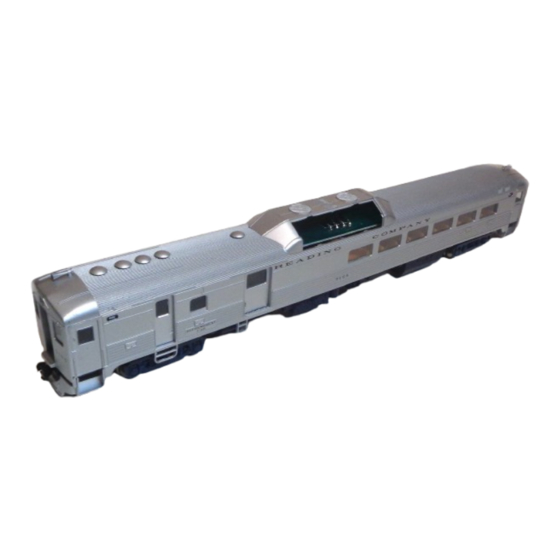
Table of Contents
Advertisement
Quick Links
OPERATING
INSTRUCTIONS
BUDD RDC
Locomotive
Il®®®
TM
Congratulations! You have just purchased one of a series of the
finest running locomotives available today. Equipped with a totally
new diecast chassis and a state of
the
art drive system, your
PROTO 1000 locomotive will give you years of enjoyment.
Your new PROTO 1000 HO Scale
BUDD RDC
diesel has been
carefully assembled and tested before leaving our modern factory.
Additionally, it has been engineered to provide virtually trouble-
free service and operation.
Removing Shell For Maintenance
Turn the locomotive upside down and remove the couplers by
unscrewing the screws located on the bottom of
the
coupler
boxes. Now locate the tour screws (Labeled part #21 in the
exploded view) that attach the
body
to the chassis. Remove
these tour screws and pull
the body
straight
up.
Important: Retain package and all packing materials in case
you need to ship locomotive
for servicing.
2 7
5
L •
Page
1
Advertisement
Table of Contents


Need help?
Do you have a question about the PROTO 1000 series and is the answer not in the manual?
Questions and answers
Proto 1000 Budd RDC: What is the function of the "cut for dcc" printed on the underside of the standard circuit board? If I cut the traces at all three of the "X" markings will that isolate the track power from the chassis/motor?
The "cut for DCC" marking on the underside of the Life-Like Products 1000 series circuit board indicates where to cut the electrical traces to isolate the motor and chassis from track power. Cutting the traces at the "X" markings will disconnect the track power from the motor and chassis, allowing for proper DCC (Digital Command Control) decoder installation.
This answer is automatically generated